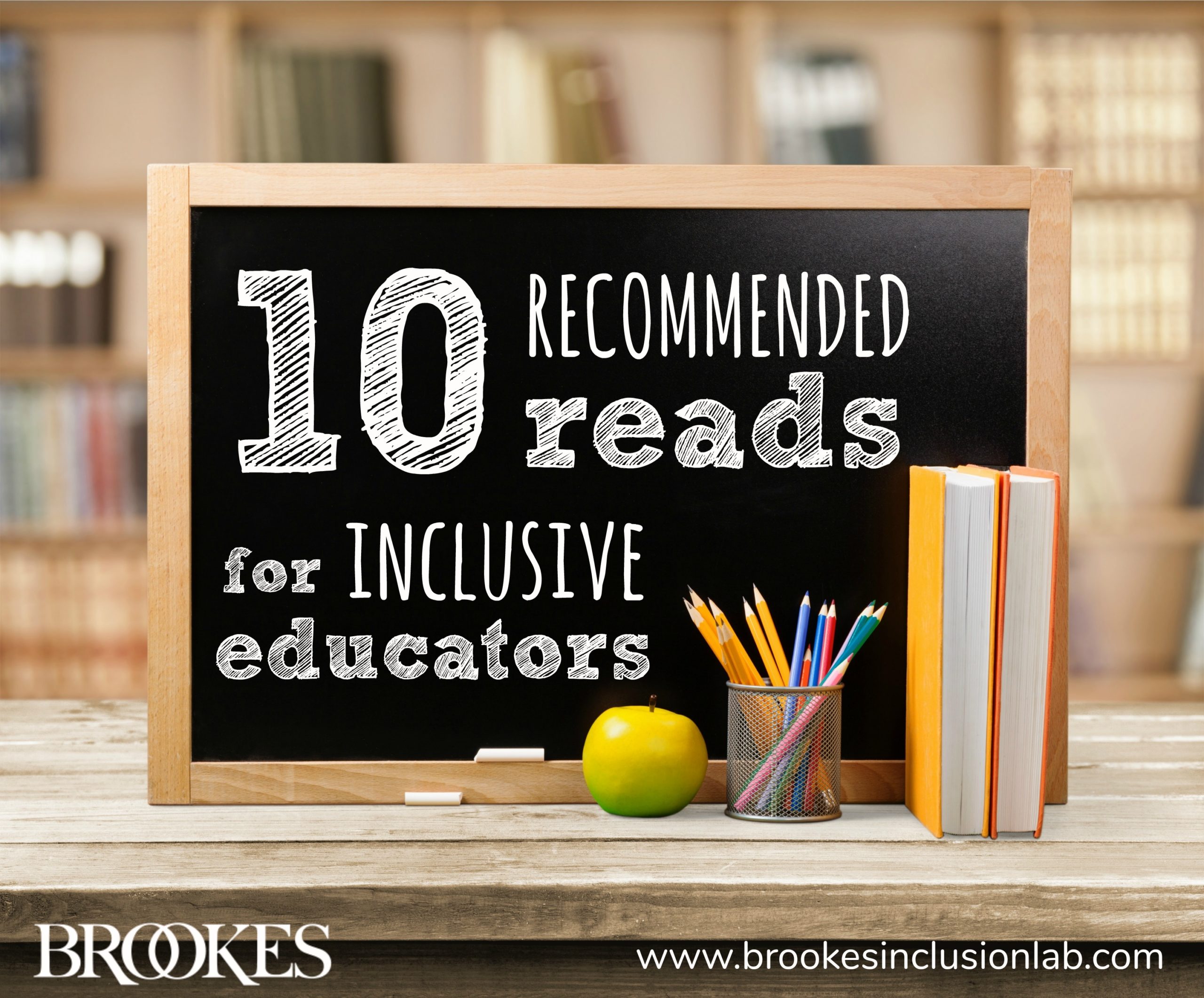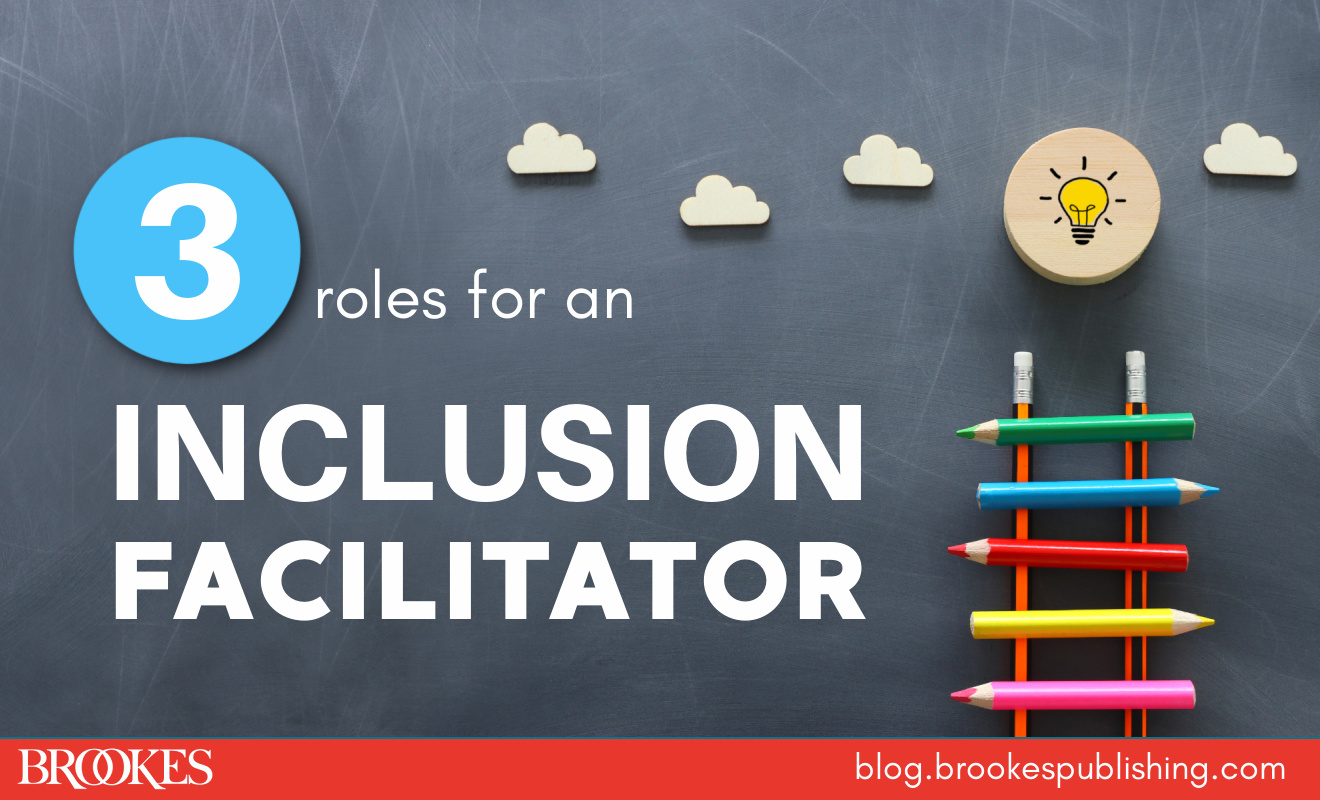 What is an inclusion facilitator—and how can these special educators help school teams ensure authentically inclusive learning environments? In their visionary guidebook Reimagining Special Education, Jenna Rufo and Julie Causton define an inclusion facilitator as:
What is an inclusion facilitator—and how can these special educators help school teams ensure authentically inclusive learning environments? In their visionary guidebook Reimagining Special Education, Jenna Rufo and Julie Causton define an inclusion facilitator as:
- A coach who provides job-embedded support on inclusive practices
- A coordinator and collaborator who supports multiple professionals in a school to implement meaningful inclusive education
- A resource for staff in building their capacity to adapt the curriculum while also creating modifications for students with the most significant needs
- A consultant for educators who offers insight on positive behavioral support strategies
- An agent of change with strong knowledge, interpersonal skills, and a relentless commitment to inclusive education
Inclusion facilitators can provide critical support as schools reopen after long closures and students return with greater variations in their academic and social-emotional skills. In today’s post, excerpted and adapted from Reimagining Special Education, you’ll learn about three different types of inclusion facilitators, how they benefit schools, and which types of facilitation work best in different settings and situations.
Building-level inclusion facilitator

A building-level facilitator provides ongoing professional development through coaching. A flexible schedule allows this inclusion facilitator to provide on-the-spot coaching and support to teachers and assist in defusing behavioral situations throughout the school. The building-level facilitator may co-plan lessons with staff and even deliver lessons jointly when teachers are trying new techniques. The facilitator also participates in grade-level planning teams to discuss upcoming content and adaptations to the curriculum, and they are involved in the school’s leadership team or data team, too.
When to use this model:
- When a substantial portion of the student population experiences barriers to education unrelated to disability
- When a structure already exists for a variety of professionals to collaborate to meet student needs
- In the initial phases of inclusive education implementation or when extensive coaching and professional development of teachers is necessary
When not to use this model:
- In schools already operating at high levels of inclusive implementation with teachers assuming primary responsibility for accommodations, modifications, and behavior support
- In very large schools that have numerous staff who can collaborate (Multiple individuals in this role may be necessary in this situation).
Example:
As a building-level inclusion facilitator, Colleen participates in the school’s MTSS/data team alongside the principal, school counselor, psychologist, reading specialist, ESL teacher, gifted teacher, and school nurse. Each of these professionals has a unique set of skills that they use to brainstorm the most effective ways to support students with diverse needs. Colleen’s knowledge of differentiating instruction to meet a wide range of needs in a single classroom is central to maintaining an inclusive environment. In Colleen’s role as building facilitator, she supports not only students with disabilities, but also general education students who are experiencing barriers to their learning.
One example is Colleen’s close collaboration with the kindergarten teaching team. Many students in this school have not had any preschool or early intervention, and they need assistance in learning the routines of school. She coaches the kindergarten team to implement strong classroom management strategies and the direct teaching of expected behaviors. For students who need additional behavioral supports, Colleen collaborates with the staff to implement a more individualized plan before referring students to a school psychologist or behavior specialist. In this way, Colleen plays an integral role in preventing unnecessary special education referrals.
Student-specific inclusion facilitator

In this approach, the inclusion facilitator is assigned to students included in general education who have the most significant disabilities. This might include students with intellectual disabilities, autism, or multiple disabilities, or those who require intensive emotional or behavioral supports. In a student-specific system, the inclusion facilitator becomes highly knowledgeable about the support needs of a small group of students. The facilitator works closely with the general education teachers, support personnel, specialty staff, and families of these children. When adopting this model, the inclusion facilitator is a coordinator, ensuring that a coordinated approach to service delivery is implemented.
When to use this model:
- When there is a small core group of students in a school who require highly individualized support
- When many individuals work individually with students and a coordinated approach to service delivery is necessary
When not to use this model:
- In schools where not many students have significant support needs—specifically, small schools
- When a large school has multiple students with complex needs—use this model only if multiple
individuals assume the role
Example:
Josie supports six students in a large K–5 elementary school. The students she supports are varied, but all have intensive needs. To support the needs of the students, Josie jointly collaborates with the general educator (and special education co-teacher, when applicable) assigned to each student. They meet during a common planning period once a week to discuss the upcoming curriculum and necessary modifications and accommodations. For students who require heavy modifications, teams discuss the most essential content for each student and how the student will access that material. Josie assumes responsibility for the intensive modifications for several students who require the teaching of parallel content at a more simplified level.
Josie is in regular communication with the support professionals assigned to her students; they meet periodically to assess progress and problem solve. Josie also visits classrooms weekly to observe how her students are doing and offer suggestions to the teams. At times, Josie models strategies for paraprofessionals to provide them with the necessary training to best support students. She also collaborates with her students’ families by maintaining a shared electronic document—each professional can enter notes, and parents can enter any questions or comments they might have.
Content-specific inclusion facilitator

As students advance through grades and are exposed to more specialized content, their special educators must be knowledgeable of that material. A content-specific inclusion facilitator is assigned to one or two departments in a school. The content-specific facilitator works with teachers in those departments to adapt the academic content and make it accessible for students with significant needs.
When to use this model:
- In middle schools and high schools, in which content knowledge becomes more specialized and subject-specific expertise is important
- In large schools that have multiple players across various departments
- In schools that are departmentalized by subject to build trusting relationships with staff
When not to use this model:
- In elementary schools, in which general education teachers function largely as generalists and teach multiple subjects
- In small schools, in which collaboration among staff is already high
Example:
Inclusion facilitator Adriana supported her colleague Will, an environmental science teacher who had a student with an intellectual disability, Raj, in his class. This was Will’s first experience working with a student who needed intense modifications, and he was not sure where to begin. Adriana began by asking Will what he thought were the most critical elements Raj should know in an upcoming unit on ocean chemistry. Will shared that he felt Raj would be successful if he understood the concepts of the temperature, depth, and salinity of the ocean. Adriana and Will sketched out individualized goals for Raj based on these three key areas.
Will identified key vocabulary that would be critical for Raj to master, as well as vocabulary they would forego with Raj. Will shared that he had already made a PowerPoint file of visuals for the class, and he could easily adapt it to provide vocabulary cards with pictures for Raj. Will and Adriana discussed an upcoming lab activity—Adriana assured Will that Raj was capable of completing the lab with support from his paraprofessional, but that he would need the response form modified. She offered to modify how Raj would respond to the lab by circling pictures rather than writing out answers. Adriana also shared modified texts she had developed the year before for a different student, which she felt would be appropriate for Raj. At the end of the meeting, Adriana and Will had a solid plan in place for Raj’s meaningful participation in the ocean chemistry unit.
As schools resume in-person learning, an inclusion facilitator can help teachers provide the individualized behavioral and academic support their students need. (When necessary, they can also create effective instruction specially designed for virtual settings.) Now is an ideal time to think about how an inclusion facilitator can help your school strengthen inclusive practices—and reimagine special education—in the wake of our collective trauma.

GET THE BOOK
A rousing call to action from inclusion experts Jenna Mancini Rufo and Julie Causton, Reimagining Special Education guides readers in creating more equitable schools and services, through practical strategies teachers can use right away and thought-provoking, big-picture questions for administrators to tackle.
Stay up to date on the latest posts, news, strategies, and more!
Sign up for one of our FREE newslettersMore posts like this

Education Beyond 2020: Everything Happens for a Reason? Nope.
February 2, 2021
Recommended Reads: 10 Books to Help You Build Your Inclusion Toolbox
May 5, 2020


Write a Comment
Your email address will not be published. Required fields are marked *
Post a Comment